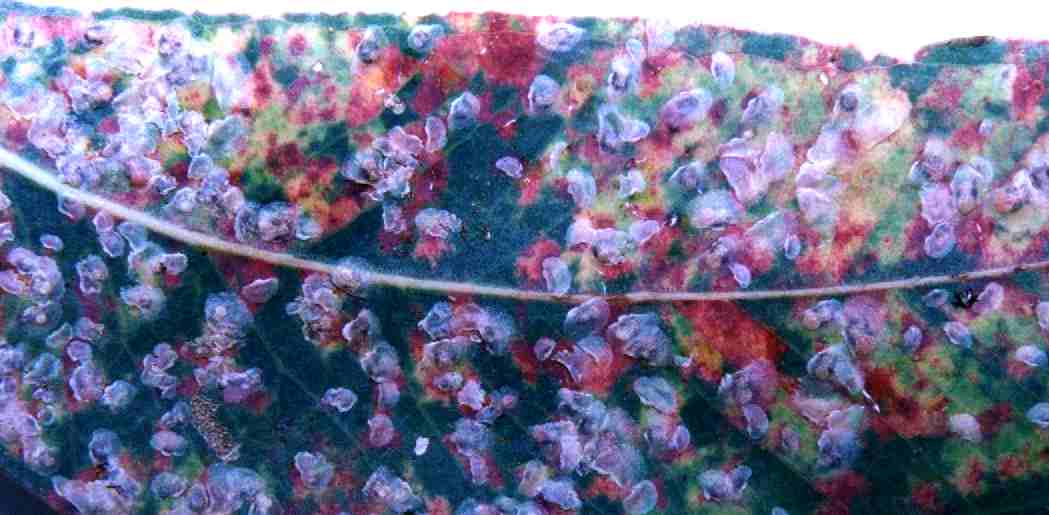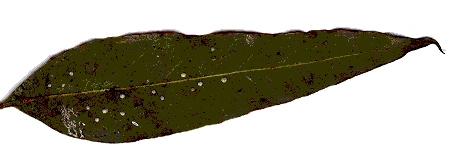- zigzag-like tunnels visible on bark
- semi-circular holes in the bark of the tree
- epicormic shoots developing from the trunk
- unhealthy young trees and trees planted in
- unsuitable conditions are preferably infested and eventually die
Under-Bark Borer Agrilus opulentus (Buprestidae)
- leaves are more or less densely covered with purple or brown blotches and translucent, shell-like lerps
- infested tree can be completely defoliated and eventually dies
Lace or Basket Lerp Cardiaspina spp. (Psyllidae)
- leaves are covered with white fibrous lerps that more or less defoliate the host
- leaves often stained with black sooty mould growing on honey dew
Glycaspis spp. (Psyllidae)
- wilt of whole branches starting from the tips and/or affecting the tree top
- mud covers on the base of the tree up to a few metres
- riddled wood filled with holes
- termite nest with more or less regular, smooth surface often in adjacent tree
- trees susceptible to damage by wind
- trees of any age can be attacked and eventually die
Nasutitermes novarumhebridarium (Holmgren) (Termitidae)
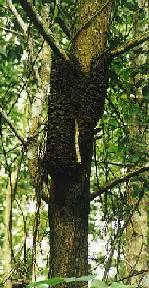
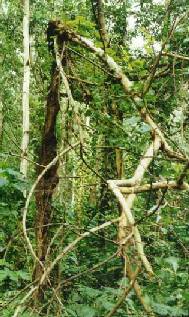
- young seedlings in the nursery completely defoliated, bent or cut off right above the soil
- damage occurs mostly during night
- stem of seedling debarked or ringbarked at the base
Seedlings either damaged by cutworms (Noctuidae) or by grasshoppers (Orthoptera)
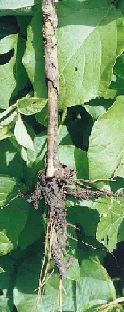
- leaves of terminal branches of younger trees trimmed by larval beetles
- defoliation of tree tops
- crescent-shaped feeding notches on leaves of the lower crown made by adult beetles
Eucalypt Leaf Beetle Paropsis spp. (Chrysomelidae)
(reprod. by permission of CSIRO Australia)
- fine, powder-like dust on the bark beneath the bore holes
- cross section shows boreholes that are radially arranged
- infestation occurs mainly after fire
Xylothrips religiosus Boisduval and other powder-post beetles (Bostrichidae and Anobiidae)
